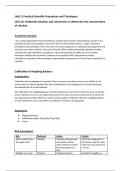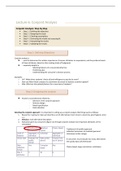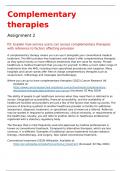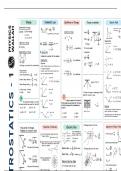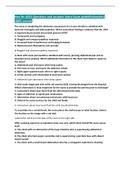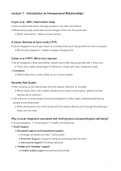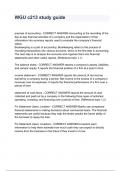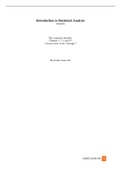Unit 2A: Undertake titration and colorimetry to determine the concentration
of solution
Vocational scenario:
I am a newly appointed technical assistant at a large chemical plant, Chemcalequip. As part of my
induction period and to progress in my role, I have to demonstrate skills in a range of practical
procedures and techniques. Part of my role is to ensure equipment is calibrated and equipment and
chemicals are safety checked. A key part of my job will be making and testing standard solutions
using titration and colorimetry procedures. I must demonstrate my ability to carry out these
techniques skilfully and accurately. Evidence of my practical skills, along with my results,
calculations, evaluation of the techniques and possible improvements will need to be submitted in a
report(s).
Calibration of weighing balance:
Introduction:
Calibration of any equipment is essential. This is because it provides accuracy and validity in our
results and if we did not perform the task of calibration of any equipment our results would vary
dramatically than if we did calibrate.
The calibration of a weighing balance is heavily important as we use it to check the mass or volume
of any substance we use in our experiments and if even 1g is incorrectly measured it can throw off
our experiment and then affect our results and calculations. Majority of the time weighing balance
are not calibrated so it is in our efforts to calibrate a vital piece of equipment.
Equipment:
Weighing balance
Calibrating weights (50g,100g,150g,200g)
Screw
Risk Assessment:
Risk Risk level Action Control
Electric shock from Medium If electric shocked seek Check the equipment of
damaged cords. immediate medical the balance and the cords,
advice and let a teacher make sure your hands are
know that balance is not wet.
bad.
Weights can cause Medium If injured stop the Handle the weights as
,injury if dropped. calibration and seek carefully as possible and
medical advice do not place them on the
immediately. edge of the tables to avoid
them from rolling of the
side.
Incorrect handling of Low If strain caused step Handle the balance and
balance and weights away from balance and weights diligently and hold
can cause strain. weights and seek using both hands.
immediate medical
advice.
Incorrect calibration Low Stop the calibration Handle the equipment as
technique can cause process immediately and gently as careful, do not
damage to report that you’ve exceed the maximum
equipment caused damage. weight the machine can
hold.
Method:
1. Ensured that all equipment was ready and set up before starting the procedure.
2. Placed the balance onto a flat and even surface, such as a table.
3. Turned on the scale and placed a calibrating weight onto the balance, such as a 50g weight
(provided by the manufacturer).
4. Checked if the balance displayed the correct weight for the calibration weight. If it did not,
adjusted the calibration either by:
Manually adjusted the calibration settings by accessing the settings of the balance
and adjusting the number according to the provided instructions.
Alternatively, adjusted the calibration screw to correct the balance.
5. Repeated the calibration process with varying weights to ensure accuracy and consistency.
Accuracy:
We put our balance on an even and flat surface because to provide stability to the balance
as if it is on a slanted level, it may affect the readings, we receive.
We place different calibrating weights ideally increasing each time to make sure that the
balance can read all of the masses available as there may be an issue where it can only read
up to a certain mass, so it's better to use all available weights the balance can withstand.
We also need to make sure there's no windows open or a fan on when performing the
calibration as this can affect the balance and its readings due to the balance being
hypersensitive.
We need to also check the temperature of the room which will always most likely be room
temperature but if it is a hotter or colder day this may affect the balance so whilst
calibrating, we should try and ensure that it should be the optimum temperature for the
balance
, Evaluation:
When the calibration of the balance was performed, we learned that the balance used could only
hold up to 200g of weight. We only used an 100g calibrating weight as that is what was available, but
once the weight was placed onto the balance, the balance recognised that there was 100g on it,
showing that the balance was calibrated. However, I feel as though we should have used varying
weights on the balance such as 25g,50g,75g,100g and so on up until 200g which was the maximum
weight the balance could hold.
Standard solution of sodium carbonate:
A standard solution is a carefully produced solution with a known concentration that is mostly used
in titration but can be used as a reference in many different chemical experiments. They are also
used in the process of calibration, which allows scientists to get exact and repeatable results from
their studies by evaluating the accuracy and precision of various pieces of equipment used in
scientific investigations.
Aim:
To produce a standard solution of sodium carbonate.
Equipment:
Weighing balance
Weighing boat
Spatula
Sodium carbonate
Distilled water
Volumetric beaker (±0.12)
Measuring cylinder
Glass rod
Volumetric flask (±0.2)
Funnel
Uncertainty of equipment:
1. Volumetric beaker (250ml) = ±0.12
2. Volumetric flask (250cm3) = ±0.2
0.2/250= 0.0008
0.0008 x 100= 0.08%


